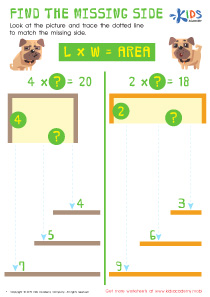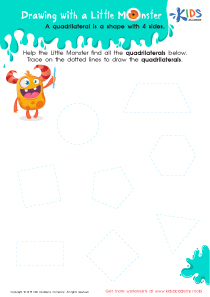Understanding fractions Easy Fractions of Shapes Worksheets for Ages 5-6
5 filtered results
-
From - To
Discover the joy of learning about fractions with our "Understanding Fractions Easy Fractions of Shapes Worksheets" designed specifically for children ages 5-6. These engaging worksheets introduce young learners to the concept of fractions through fun and colorful shapes, making complex ideas understandable and enjoyable. With simple visual aids, kids will explore halves, quarters, and more, developing essential math skills in a playful manner. Perfect for both classroom and home use, these worksheets encourage interactive learning, helping young students build a strong foundation in mathematics. Download now to spark your child’s curiosity and confidence in understanding fractions!
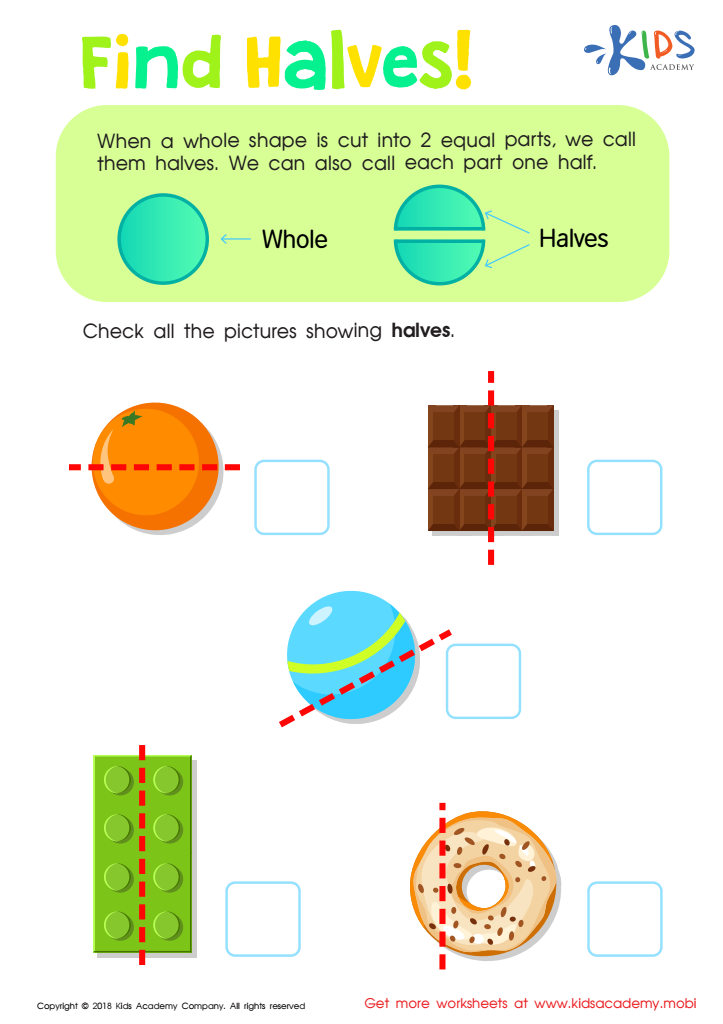

Find Halves Worksheet
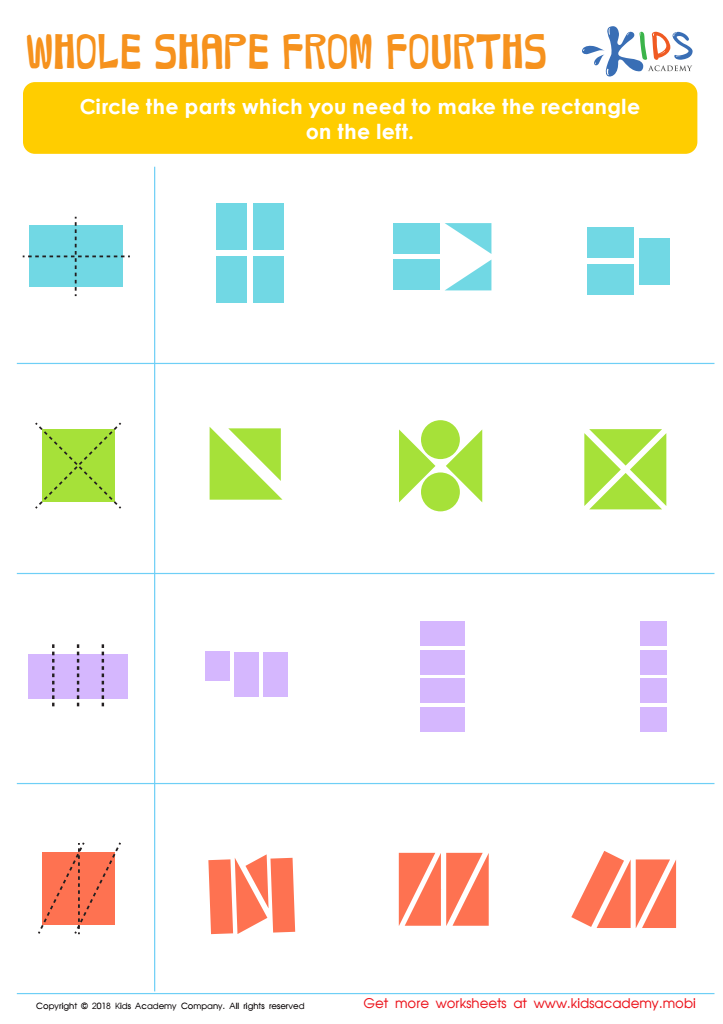

Whole Shape from Fourths Worksheet
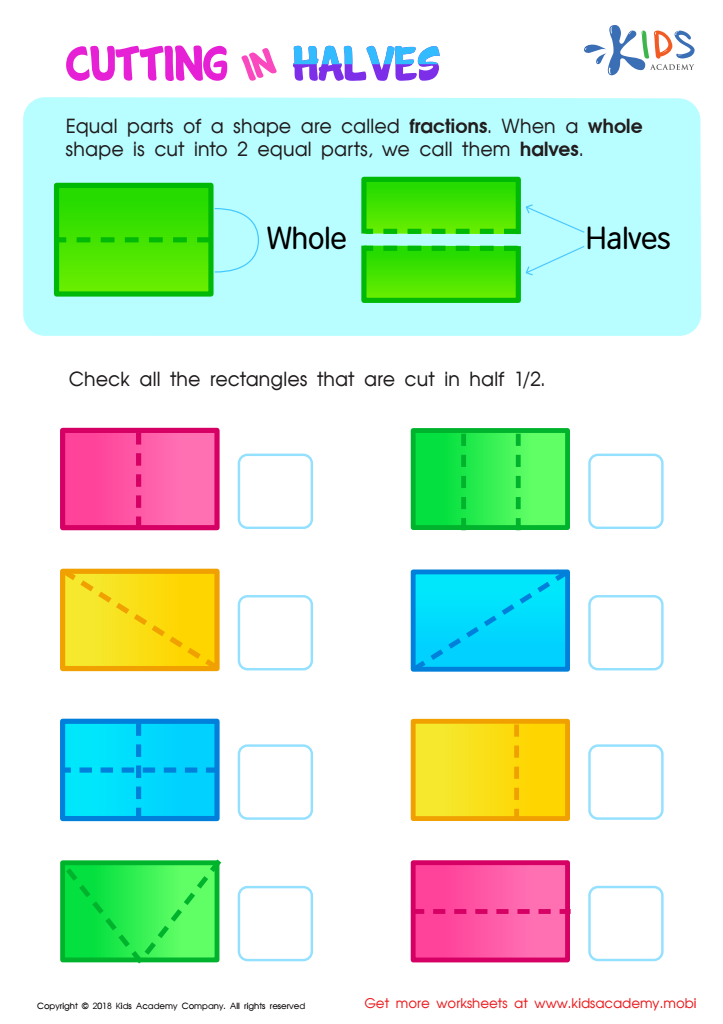

Cutting in Halves Worksheet
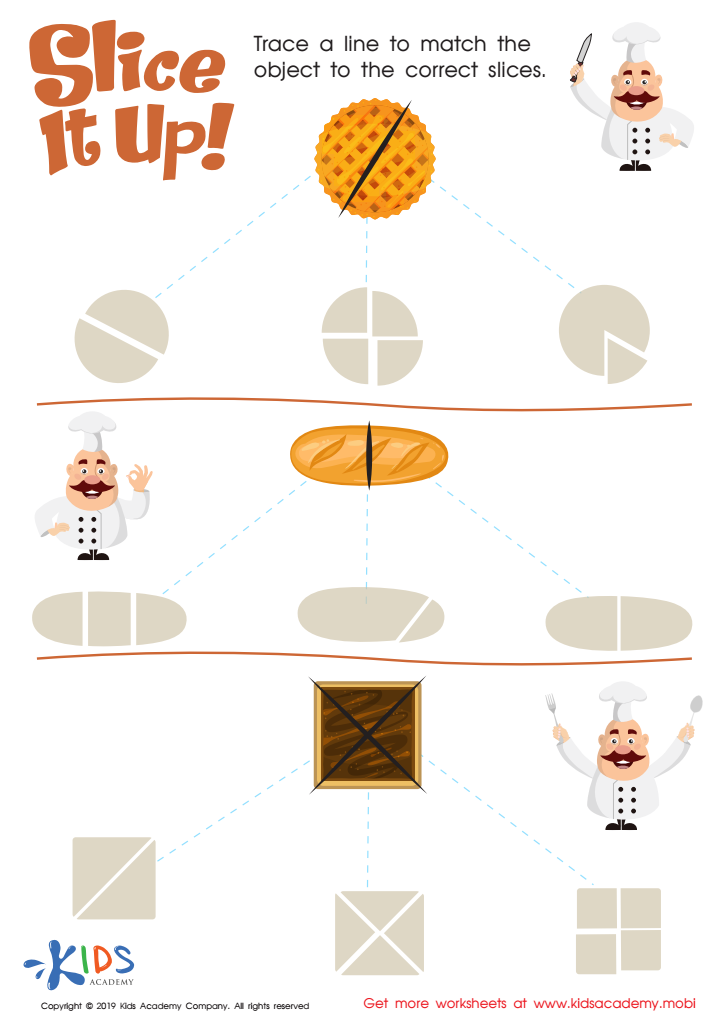

Slice It Up Worksheet
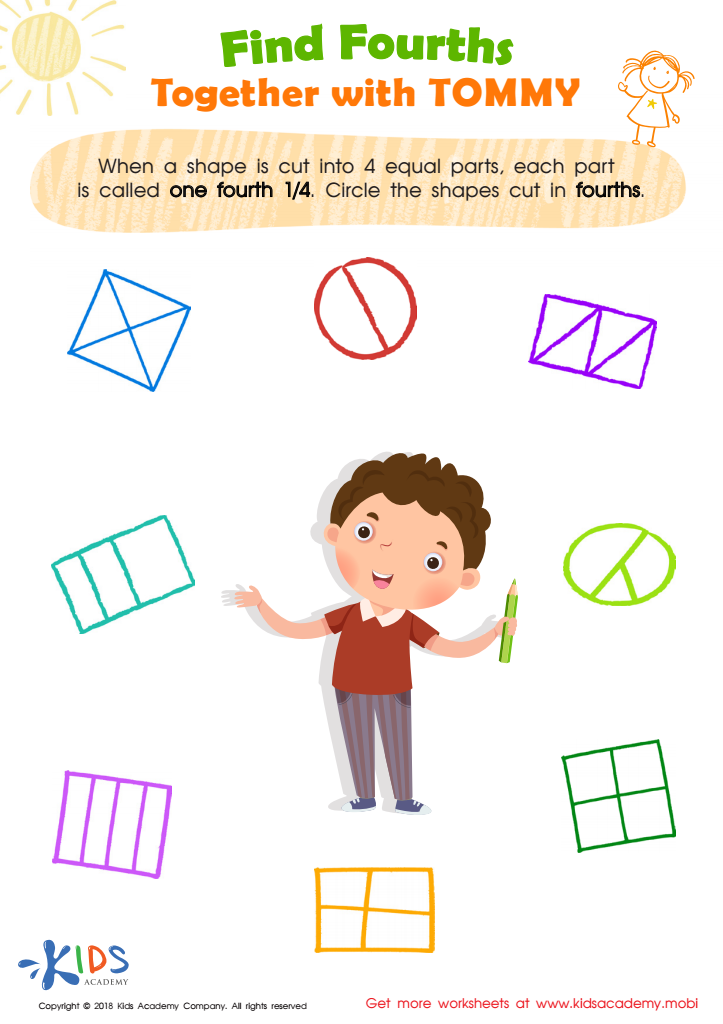

Find Fourths Together with Tommy Worksheet
Understanding fractions, particularly for young learners aged 5-6, is essential for several reasons. First, this foundational knowledge instills a sense of mathematical language and critical thinking early in a child's education. Recognizing fractions through shapes, such as circles divided into parts, helps children visualize and grasp the concept of parts of a whole, which is vital for more complex math later on.
Moreover, fractions encourage problem-solving skills. As children learn to identify and manipulate different sections of shapes, they engage in exploration, comparison, and reasoning—which builds their cognitive abilities. Understanding fractions can also enhance their spatial awareness and boost creativity, as children often experiment with shapes in art and play.
Furthermore, teaching fractions in a relatable context, like dividing a pizza or sharing candy, makes learning relevant and fun, fostering positive attitudes toward math. Parents and teachers also benefit from nurturing an environment where children feel confident discussing mathematical ideas early on. This approach not only supports academic growth but also prepares children for everyday applications of math, ultimately facilitating their lifelong learning journey. Therefore, integrating “Easy Fractions of Shapes” into early education is a crucial step towards building strong math foundations.
 Assign to My Students
Assign to My Students














